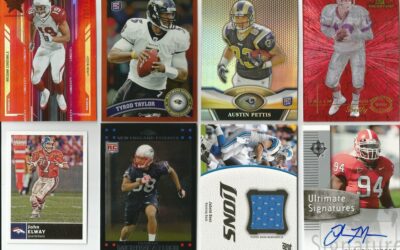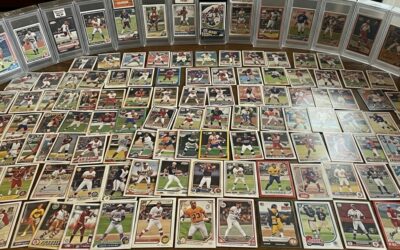If you’ve ever sat in a card show circle nodding along while someone talks up PSA like it’s the second coming, you might’ve thought: “Is SGC even on the radar?” Spoiler alert: it should be. Because while everyone else is tripping over “PSA 10 or bust,” there’s a whole under-the-radar playbook waiting for those willing to turn their heads left—and maybe pocket a few extra dollars along the way.
The Hidden Advantages of SGC
First off: speed. If PSA—has your card for 60+ business days, SGC might get it back in under two weeks. For a flipper, that’s the difference between selling next Monday or next quarter.
Second: cost. Think you’re saving with PSA bulk rates? Great—for that 2012 stadium giveaway you’ll never unload. SGC’s flat $15–$18 per slab is more predictable and aggressive. It’s especially valuable when you’re submitting a stack of vintage commons that have solid upward movement, but not enough to justify premium turnaround prices.
Second-Point-Five: Upcharges. PSA will literally hold your card hostage. How? Let’s say you send in a card and pay the bulk rate of $19. If it grades a PSA 10 and they unilaterally decide it has increased in value significantly, they’ll charge you an additional fee to get your card back, because they tier their pricing based off their card’s value. For instance, you submit a 2011 Mike Trout Update raw, thinking it’s a PSA 8. It hits a 10? Boom—PSA slaps you with a $75+ upcharge based on its market value. It’s the most absurd scam in the game. SGC doesn’t do that crap (yet.. the parent company that owns PSA just purchased SGC so it’ll probably happen).
Third: vintage love. SGC slabs have carved a respected niche among vintage collectors—especially those hunting pre-war and mid-century cardboard. A clean 1955 Topps with an SGC 7 or 8 often goes for the same or even more than a PSA 7, because their grading model often aligns more conservatively, meaning fewer unpleasant surprises when the buyer opens the package.
The Psychology of Perception
Let’s be honest: graders are a status signal. PSA 10—everyone knows the term. But more collectors are learning that if a card looks good and grades solid at SGC, that’s where the smart money is. Raw cardboard flippers especially are shifting, because they realize SGC’s consistent grade lines and faster turnaround creates a cleaner flip funnel.
Worst-case, people still list “SGC 9” alongside PSA equivalents and watchers still bite—because at the end of the day, it’s a slab with backup. And faster than you can say “PSA backlog.”
How to Use SGC to Your Advantage
- Be strategic with vintage commons. Low- to mid-tier cards from the 1950s–1970s are your SGC sweet spot—high enough drop value vs raw, but not so flashy that PSA premiums drown your ROI.
- Buy raw with intent. When picking up cards at shows or local sales, use a loupe to inspect centering, surface, corners, and edges. SGC is less forgiving on surface, so pick cards that look clean-ish.
- Watch for bulk submission services. Some trusted groups offer SGC tiers at $12–$15 per card (remote or in-person). They batch, sort, and submit fast—your job is just packing and listing once they come back.
- Time your sale. SGC slabs hit listing faster—so you can time your entry into eBay auctions when demand is higher (think: evenings, weekends, playoff season).
Minimized Risk, Maximized Volume
This is the part where I sound like a cheerleader, but flip-savvy: volume is leverage. PSA grading is great—if you’re invested in marquee rookies or ultra-high-end investments. But SGC scales. You can do 20–50 cards a month, rotate capital, and keep inventory lean—all while building sales velocity.
And guess what? That steady revenue is more valuable long-term than swinging for sporadic home runs that sometimes foul out.
When PSA Still Wins
Okay, fair: there are times when you hold your nose and go PSA. High-end modern rookies (hello, Bowman Chrome), iconic Hall of Famers in mint condition, and slabs for Instagram brag rights—those are PSA’s lane. But for anyone flipping volume, especially in vintage, SGC is like a hidden bypass outpacing derivatives of traffic jams.
Quick FAQs
Do buyers recognize SGC? Yep. Vintage communities respect the grade consistency, and listing your slab with a few comps helps.
Is resale slower? Not if you price smart. Slab liquidation is easier when the card is out-of-print or rare—for the right price, the slab sells fast, regardless of brand.
Should every card go SGC? No. Pick your targets. Don’t slab condition-beaten junk, and don’t force SGC on high-dollar rookies that only trade PSA 10.
Final Takeaway
SGC slabs aren’t a second-tier backup—they’re a strategic, underrated mainstay for flippers who want speed, predictability, and cost-efficiency. It’s like discovering an express lane everyone else ignored. So next time your box of vintage hits around, ask yourself: “Would SGC make this cleaner, faster, leaner?” The answer is often a quiet “yes.”




0 Comments